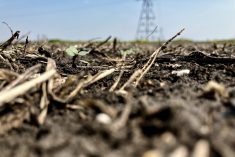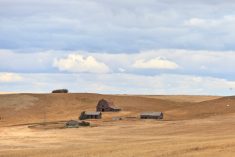Average farmland prices were up 12.8 per cent in Canada in 2022, the largest increase seen since 2014 when the increase was 14.3 per cent. The increase follows gains of 8.3 per cent in 2021 and 5.4 per cent in 2020.
J.P. Gervais, FCC’s chief economist, said the numbers were a little bit of a surprise.
“At this exact same time a year ago, I said that I expected the rate of increase to be smaller than the 2021 rate of increase,” said Gervais. “That was my expectation. Up until very recently, I did not think that we were going to get 12.8 per cent.”
Read Also

Lending policy still focused on primary producers: FCC
Farm Credit Canada said it has not changed its business practices and remains committed to supporting all producers, after a report from an Ottawa-based media outlet claimed otherwise.
Gervais explained that he had thought that challenging economic conditions would have been expected to slow the demand for farmland, but the picture became clearer in recent months.
“It’s all about supply and demand,” Gervais explained. “On the demand side, we might find it a little surprising that demand remains as strong as it has given high interest rates and high input costs. But the flip side of that is that we’ve had strong receipts as well,” he said, noting that receipts for grains, oilseeds and pulses increased 18.3 per cent in 2022.” And on the supply side, all the data that we collected weighed out to a very tight supply of farmland available for sale.”
The highest average provincial increases in farmland values were observed in Ontario, Prince Edward Island and New Brunswick, with increases of 19.4, 18.7 and 17.1 per cent, respectively. Saskatchewan followed with a 14.2 per cent increase. Five provinces had average increases below the national average: 11.6 per cent in Nova Scotia, 11.2 per cent in Manitoba, 11 per cent in Quebec, 10 per cent in Alberta and eight per cent in British Columbia. There was insufficient data to fully assess farmland values in other regions of the country.

“We have not yet seen the full impact of higher interest rates on the demand for farmland.” J.P. Gervais. Graphic: Farm Credit Canada
Gervais says there are a few things to note about the data in the report.
Firstly, because the report is based on the calendar year, the effect of the drought on the prairies in 2021 is still acting as a drag on land prices and may explain the difference in increases when compared to Ontario, which didn’t suffer through the drought. But Gervais says not to draw too much from those differences across provinces. “It’s getting harder to generalize about what’s going on in the marketplace, even within a province,” he said.
The second thing to note is that interest rate increases haven’t yet worked their way through the system. “We have not yet seen the full impact of higher interest rates on the demand for farmland,” said Gervais, noting that the reason for the lag is that people locked in when rates were lower.
Another point Gervais says is worth noting is that land values relative to farm income are as high as they’ve ever been. “In most, if not all, provinces, we’re getting very near the top of the market ever in terms of the value of land relative to farm income,” he said.
Gervais acknowledges that higher farmland values pose a challenge for young producers, new entrants, and other operations that are looking to expand. What this means for farmers is that a strong risk management plan is critical, especially if they are looking to buy land. “You need to have an elaborate strategic plan for your operation over the next five years and a strong risk management plan that goes with it,” he said.
“Land is more expensive now, relative to income, than it’s ever been,” said Gervais. “The ability to service debt and overall equity in the operation are critical factors of success going forward,” he said. “The good news is that farmland value increases reflect a positive outlook for the demand for agriculture commodities and the quality food we produce in Canada.”














